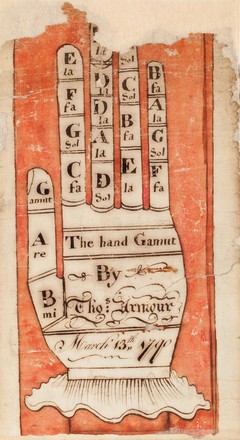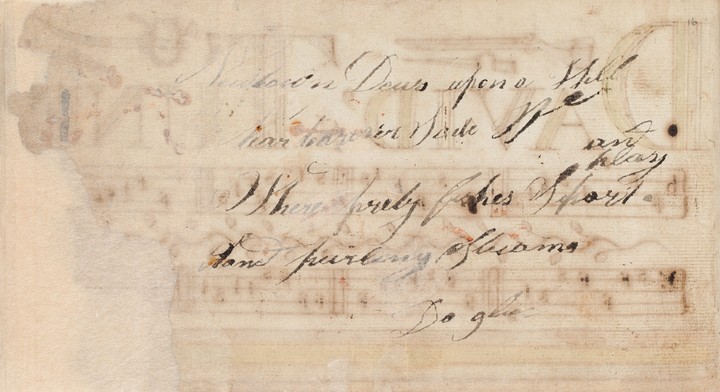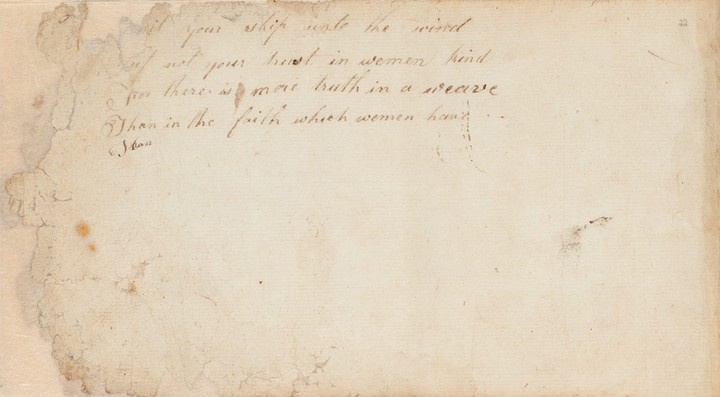The hand gamut, 13 March 1790
RB/MSS090
Manuscript sight-singing tutor
The manuscript employs a method of sight-singing known as solmisation. Attributed to medieval Italian music theorist Guido of Arezzo (c. 991–after 1033), the set of six solmisation syllables — ut – re – mi – fa – sol – la — was used in the oral teaching of melodies. These ascending notes were known as the hexachord. A ‘hand gamut’ was a mnemonic device, or visual aid, on which solmisation syllables were mapped to parts of the human hand. A teacher would indicate which notes to sing by pointing to particular finger joints. Although it first appeared after Guido of Arezzo’s time, the hand gamut is frequently referred to as the Guidonian hand.
Footnotes
Meredith Lawn, Music Archivist,
State Library of NSW
A gamut of emotions
By Meredith Lawn, Music Archivist, State Library of NSW
The lowest note in the medieval hexachord system,
and the starting point on the Guidonian hand (at the tip of the thumb), was
given the name gamma ut, contracted to gamut. The six notes of the hexachord
were extended to span nearly three octaves and ‘gamut’ came to refer to the
whole musical scale represented on the hand. The word is still used today to
mean the full range, as in the ‘gamut of emotions’.
The five-line stave
By Meredith Lawn, Music Archivist, State Library of NSW
Instead
of using conventional music notation, which by the late eighteenth century
looked very similar to modern music notation, Armour placed the solmisation syllables
directly onto the five-line stave. The musical stave was another of Guido of Arezzo’s inventions, although his stave only
had four lines.
Psalm singing sins
By Meredith Lawn, Music Archivist, State Library of NSW
In
the second half of the eighteenth century, there was a push to improve the
standard of psalm singing in Scotland and several tune books and anthologies
appeared which revived the old Scottish psalm tunes and adapted English tunes
to the Scottish metres. Because it was considered sinful to sing psalms outside
of worship, practice verses were substituted. Two such verses have been jotted
down on the back of pages in the manuscript.



 Back to list
Back to list
